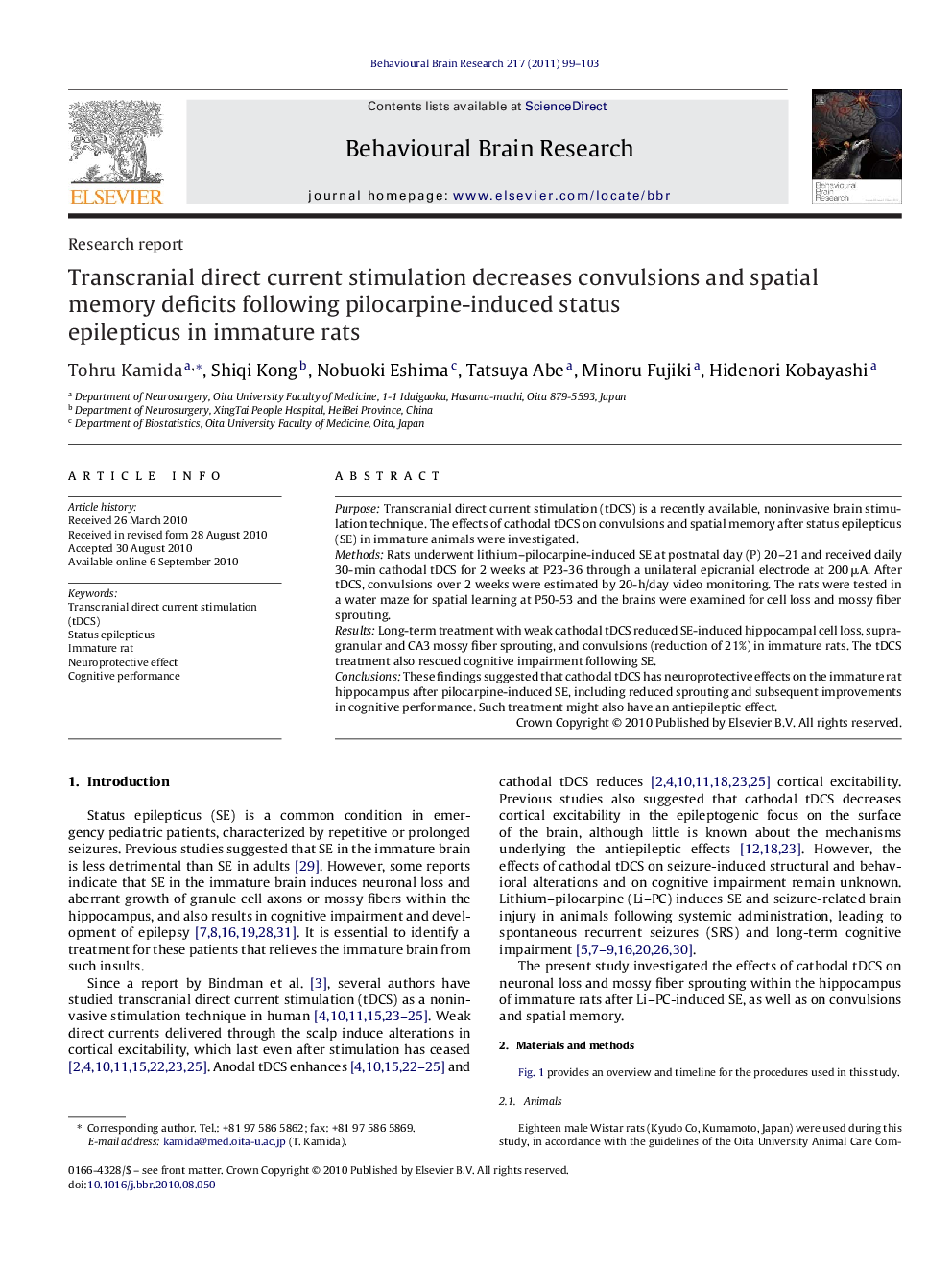| Article ID | Journal | Published Year | Pages | File Type |
|---|---|---|---|---|
| 4313870 | Behavioural Brain Research | 2011 | 5 Pages |
PurposeTranscranial direct current stimulation (tDCS) is a recently available, noninvasive brain stimulation technique. The effects of cathodal tDCS on convulsions and spatial memory after status epilepticus (SE) in immature animals were investigated.MethodsRats underwent lithium–pilocarpine-induced SE at postnatal day (P) 20–21 and received daily 30-min cathodal tDCS for 2 weeks at P23-36 through a unilateral epicranial electrode at 200 μA. After tDCS, convulsions over 2 weeks were estimated by 20-h/day video monitoring. The rats were tested in a water maze for spatial learning at P50-53 and the brains were examined for cell loss and mossy fiber sprouting.ResultsLong-term treatment with weak cathodal tDCS reduced SE-induced hippocampal cell loss, supragranular and CA3 mossy fiber sprouting, and convulsions (reduction of 21%) in immature rats. The tDCS treatment also rescued cognitive impairment following SE.ConclusionsThese findings suggested that cathodal tDCS has neuroprotective effects on the immature rat hippocampus after pilocarpine-induced SE, including reduced sprouting and subsequent improvements in cognitive performance. Such treatment might also have an antiepileptic effect.
Research highlights▶ tDCS is a recently available, noninvasive brain stimulation technique. ▶ Weak cathodal tDCS reduced SE-induced hippocampal alterations and convulsions. ▶ The tDCS treatment also improved cognitive impairment following SE. ▶ Such treatment might also have an antiepileptic effect.
